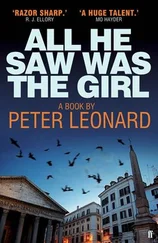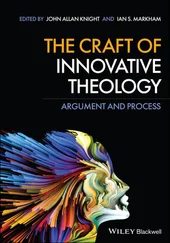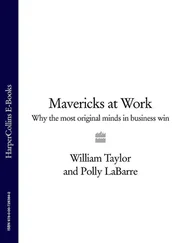Peter Seibel - Coders at Work - Reflections on the craft of programming
Здесь есть возможность читать онлайн «Peter Seibel - Coders at Work - Reflections on the craft of programming» весь текст электронной книги совершенно бесплатно (целиком полную версию без сокращений). В некоторых случаях можно слушать аудио, скачать через торрент в формате fb2 и присутствует краткое содержание. Жанр: Программирование, на английском языке. Описание произведения, (предисловие) а так же отзывы посетителей доступны на портале библиотеки ЛибКат.
- Название:Coders at Work: Reflections on the craft of programming
- Автор:
- Жанр:
- Год:неизвестен
- ISBN:нет данных
- Рейтинг книги:3 / 5. Голосов: 1
-
Избранное:Добавить в избранное
- Отзывы:
-
Ваша оценка:
- 60
- 1
- 2
- 3
- 4
- 5
Coders at Work: Reflections on the craft of programming: краткое содержание, описание и аннотация
Предлагаем к чтению аннотацию, описание, краткое содержание или предисловие (зависит от того, что написал сам автор книги «Coders at Work: Reflections on the craft of programming»). Если вы не нашли необходимую информацию о книге — напишите в комментариях, мы постараемся отыскать её.
Coders at Work
Founders at Work
Coders at Work: Reflections on the craft of programming — читать онлайн бесплатно полную книгу (весь текст) целиком
Ниже представлен текст книги, разбитый по страницам. Система сохранения места последней прочитанной страницы, позволяет с удобством читать онлайн бесплатно книгу «Coders at Work: Reflections on the craft of programming», без необходимости каждый раз заново искать на чём Вы остановились. Поставьте закладку, и сможете в любой момент перейти на страницу, на которой закончили чтение.
Интервал:
Закладка:
Seibel:And the programs on the digital computer were written in assembly or Fortran?
Thompson:They were assembly mostly. There was an interpreted language that turned out to be too slow. That’s why I was forced to go to assembly and actually learn what the computer was.
Seibel:So load in your program, hit the run button, and away you go. Was it using punch cards?
Thompson:No, no. It was a Flexowriter, which is like a Teletype and paper tape. And you’d store it on paper tape and talk to it on the Flexowriter.
Seibel:Did they actually teach you assembly in that lab?
Thompson:Nah.
Seibel:What was your next exposure to programming?
Thompson:This G15 had an interpreter called Intercom 501. And the double-E class would program it in Intercom. There was a graduate student that I was friends with that wrote an interpreter for Intercom on the big IBM machine, the big campuswide computing facility. I got a listing of that and on vacation, Christmas or something, I read it and just dissected it. I didn’t know the language it was written in. which happened to be NELIAC. And it was just a marvelously written program. And I learned programming, NELIAC, Intercom, and how to interpret something—everything—from that. I just sat and I read it for probably the entire vacation, a week. And then came back and asked him questions about it, nagging little bugs kinds of things. After that I knew how to program and I was pretty good at it. Then I got jobs programming.
I was basically working my way through school, work-study and then odd jobs. I was a research assistant—a grunt for a graduate student to get programming done for his thesis. And I was a TA. I did programming for the computer center. Part of the computer-center stuff was to sit in a little booth and have people come in and say, “I only changed one thing.” “Well, let’s look at that one thing and see what happened to you.”
Seibel:Did that hone your debugging skills or was it all just incredibly stupid stuff?
Thompson:It honed that type of debugging—you understood common errors really well after that. Somebody who had spent days working on their program would come in and you’d say, “Right there!”
Seibel:And your degree was in double E? Did they offer a computer science degree at that point?
Thompson:No, all over the United States at the time computer science was trying to come out, and it was coming out in two ways. It was coming out theoretically through math, or practically through double E. In Berkeley, computer science at that point was almost exclusively inside of electrical engineering. Math was trying, but they just weren’t politically astute enough to compete with these old grizzled guys.
Seibel:Berkeley obviously ended up being known for things like the Berkeley Systems Lab—building things—as opposed to being renowned for contributions to theory.
Thompson:Yes, absolutely. This is the genesis of either a theoretical computer-science department, like Cornell, or the Berkeley kind of computer science. It really gives the flavor to the place. So I spent one year in graduate school there, not because I had any ambitions for anything. It’s just because I had nothing else to do and I was having a good time.
Seibel:Immediately after college?
Thompson:Yeah. To be honest, I was working at the university and I didn’t even apply for graduate school. One of the professors essentially applied for me and told me I was in graduate school.
Seibel:Still in double E?
Thompson:Right. My senior year and my graduate year were just immense fun. I didn’t do anything that I didn’t want to do. There were no requirements, no nothing. To graduate I took a summer course in American history or something, some requirement, to get a degree. But outside of that, my senior year and my graduate year I taught about half of the courses I took.
The basic theory of computing was just coming out then. Shell sort came out and no one could figure out why it was faster than n -squared sort. And so everyone was doing tests on it and trying to figure out—it’s pretty easy to see it sorts, but nobody knows why it’s fast. And they were taking the asymptote and figuring out why it was n to the 1.3 or something like that. And that’s just not a natural number. And from that—shell sort and the intellectual attraction to shell sort and why it was fast—came all this speed order of computing. And the first n log n s and divide and conquer and all that struck. It was an amazing, exciting era.
I had friends, a bunch of these very junior professors—a math professor I was real close to, and a double-E professor I was close to, and the graduate student that I worked for, and others. They would invent a class for me, and then I would teach the class.
Seibel:Were you officially taking the class or were you actually on the books as teaching it?
Thompson:No, no, I wasn’t on the books as teaching it. They were all double-E 199, which meant individual research or group research or something. And they would invent a class and give it a title and then turn it over to me. And there’d be three or four students there.
Seibel:Of which, officially, you were one.
Thompson:Yes.
Seibel:Did you like teaching?
Thompson:To an extent. I’ve gone back and taught twice. Taken a year off and taught one year at Berkeley in ’75–‘76 and one year in Sydney in ’88. It’s fun. I really, really enjoy it. I was doing research in the labs and I went to Berkeley to teach and to learn the classes I was teaching from the bottom up since I never had a computer-science education. A normal visiting teacher teaches one class. I taught five classes. Some classes I taught twice and I thought they were the best because the first year I was learning and the second time I taught it I knew where it was going and I could present it organized and be two steps ahead of the students. The third class was just boring. I taught one class three times and it was just wrong. So I could never be a teacher because you end up teaching your class over and over and over. I could never do that. But I love the teaching: the hard work of a first class, the fun of the second class. Then the misery of the third.
Seibel:What was the first interesting program you wrote?
Thompson:The first long computational program I wrote was solving the pentaminos problem. Do you know it?
Seibel:The tile game, right?
Thompson:It’s a tile game. And I ran it on an IBM 1620 that was in the physics department. I knew where all the underground computers were in the place, and I had them all running at night doing my jobs. Plus, at the main computer center I probably had 20 accounts under different rocks. There are 12 pentaminos. These are different tile pieces made out of 5 squares. And there are 12 different such shapes.
Seibel:Sort of like Tetris tiles.
Thompson:Yes. But every piece has five squares. If you put them all together on the board there are two configurations that are—I don’t know—appealing. One is the most square, which is ten-by-six, and then the second is eight-by-eight with a two-by-two hole in the middle. And I solved all configurations of those two boards of how you place the pieces for those boards. And I did it generically by laying out a pattern of the boards and then laying out pattern pieces, and then it would fit the pieces in the patterns. It didn’t know it was pentaminos.
Читать дальшеИнтервал:
Закладка:
Похожие книги на «Coders at Work: Reflections on the craft of programming»
Представляем Вашему вниманию похожие книги на «Coders at Work: Reflections on the craft of programming» списком для выбора. Мы отобрали схожую по названию и смыслу литературу в надежде предоставить читателям больше вариантов отыскать новые, интересные, ещё непрочитанные произведения.
Обсуждение, отзывы о книге «Coders at Work: Reflections on the craft of programming» и просто собственные мнения читателей. Оставьте ваши комментарии, напишите, что Вы думаете о произведении, его смысле или главных героях. Укажите что конкретно понравилось, а что нет, и почему Вы так считаете.












